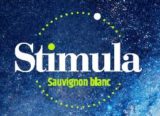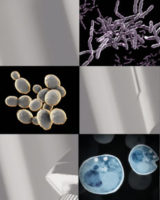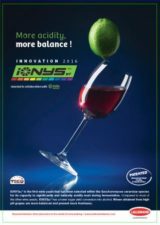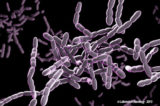
UNIQUE SPECIFIC AUTOLYSATE TO HELP WITH PINOT NOIR COLOUR AND TEXTURE MANAGEMENT
COLOUR AND TEXTURE MANAGEMENT
Recent research has given us a much better understanding of how yeast and phenolic compounds interact in red wine, enabling us to better characterize the biochemical and biophysical properties of yeast with unique wine-relevant characteristics. We have described the development of a specific yeast autolysate with unique wine sensory impacting properties. A yeast autolysate (MEX-WY1) was prepared from a wine yeast with distinctive characteristics. Studies using model grape must revealed the involvement of mannoproteins in the soluble fraction of the autolysate in the formation of stable complexes that contribute to colour stabilization and reduction in wine astringency. Winery trials demonstrated that adding the specific autolysate MEX-WY1 at the beginning of fermentation had a positive effect on wine sensory characteristics such as colour, mouthfeel, and fruitiness in red wine, especially Pinot Noir wines. Thus, the new specific autolysate constitutes a unique tool to improve colour and texture management in Pinot Noir. MEX-WY1 has been released as commercial product, OPTI-MUM RED™ OMR Color and Texture
CUSTOM NUTRITION FOR SPECIFIC WINE YEASTS IN SAUVIGNON BLANC
Sauvignon Blanc
In an increasingly competitive market, optimizing the quality of wines, especially the sensory properties, is a major challenge for winemakers. Wine aroma is one of the principal attributes determining wine consumers’ preferences. The importance of nutrients such as nitrogen or lipids in alcoholic fermentation is well known in the wine industry. Indeed, to assure a complete fermentation with a regular kinetic, winemakers have to ensure that musts have adequate nutritional, physical, and chemical conditions for optimum yeast development. More recently, lipid content, temperature, as well as nitrogen and other micronutrients have been shown to have a great impact on a large number of flavour compounds biosynthesized by wine yeast during alcoholic fermentation. The interactions between nitrogen and other key nutrients such as lipids and vitamins and their influences on yeast viability and yeast fermentative capacities will be explain in the first part of this article. The second part will aim at demonstrating the importance of nutrients and micronutrients in yeast aroma metabolism as well as yeast’s ability to synthesize aromas and especially to reveal varietal aromas in Sauvignon Blanc winemaking. Stimula Sauvignon Blanc
ALCOHOLIC AND MALOLACTIC FERMENTATIONS: WHAT IMPACT ON FRESHNESS?
Freshness
In the context of climate change, increased pH and alcohol content can result in heavier wines, while some consumers are moving towards a lighter, fresher style of wine. Beyond the notion of acidity, the sensory aspect must also be taken into account (fresh fruit aromas, vegetal notes, etc.). From veraison to bottling, each step can have an impact on the different layers of a wine’s freshness. This article aims to present recent results and tools related to fermentation management and the search for freshness in winemaking. Freshness ENG F

